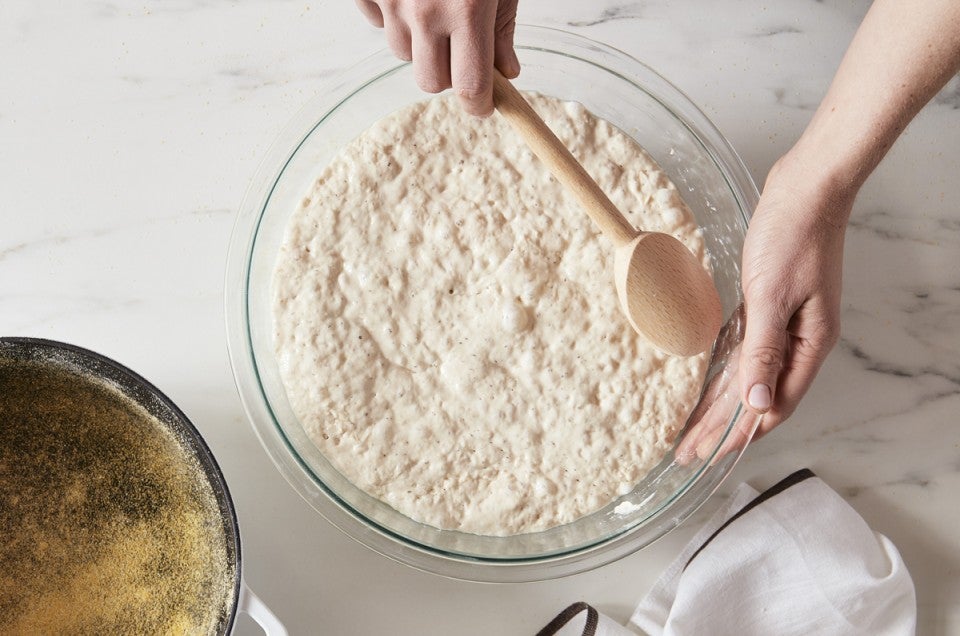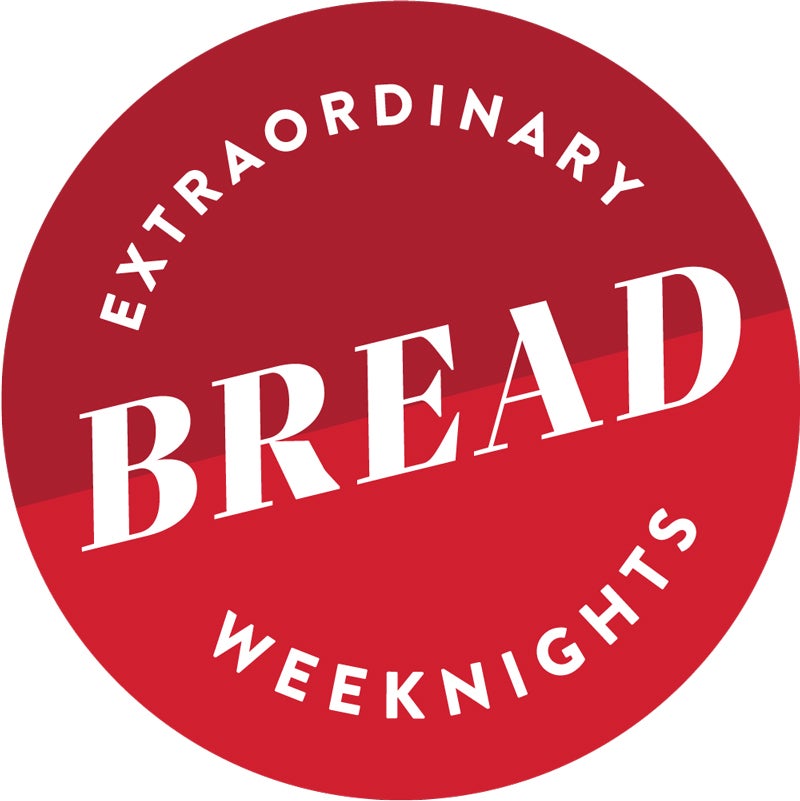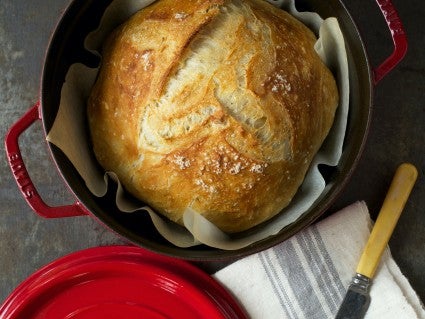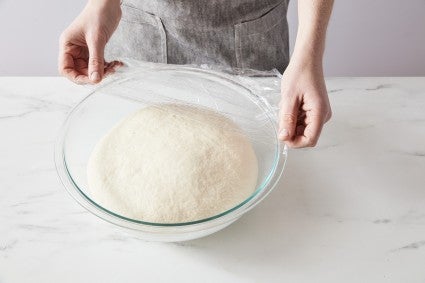Why multiday breads are actually the easiest breads of all
Embrace the overnight rise and make bread in your sleep.


 Yes, you can fit bread baking into your routine! We're showing you how extraordinary bread is achievable on just about any weeknight — especially with the help of an overnight rise in the fridge or ingredients prepped ahead of time. This is Extraordinary Bread: Weeknights.
Yes, you can fit bread baking into your routine! We're showing you how extraordinary bread is achievable on just about any weeknight — especially with the help of an overnight rise in the fridge or ingredients prepped ahead of time. This is Extraordinary Bread: Weeknights.
* * *
In a perfect world, we’d have all day, every day, to bake. We’d enjoy fresh muffins in the morning and a slice of cake as an afternoon snack. And come dinnertime, we’d take a few hours to bake fragrant rolls or savory cheese bread to accompany our meal.
Unfortunately, we don’t live in a perfect world, and a fresh batch of bread accompanying a weeknight dinner might seem like a flavorful fantasy. After all, who has time to prep bread in the middle of their workday for later that night? I work at a literal baking company, and I don’t even have the time.
Homemade weeknight bread might seem like something that could only be conjured with superpowers. But luckily, we bakers have a little magic in our back pockets that makes this seemingly impossible feat not only doable, but enjoyable: the overnight rise.

You’ve been there before: scanning through recipes in search of the perfect bread to bake, and just when you think you’ve found The One, you see a huge number staring back at you. “Total Time: 12 hours." Really?!
Too often, we confuse “easy” with “quick,” which is understandable. A lot of things that are easy are also quick! But when it comes to bread, that’s not necessarily the case. A high number under total time — something like 12 hours, or even 24 hours — doesn’t mean that you’re actively baking that long. Typically it means a bread recipe involves an overnight proof, which simply refers to the fact that the dough is left to rise overnight, usually in the fridge. Though it technically takes longer to make, the overnight proof is actually the easiest way to fit regular bread baking into your schedule. Think about it: You’re literally making bread while you sleep.
Stuart Thompson, who started the website Bread Scheduler to help people fit bread baking into their busy day, says that “The overnight in the fridge process is helpful. You get a lot of time in without that much worry — you just kind of deal with it in the morning.”
1) It breaks up work into bite-sized pieces over multiple days.
King Arthur baker Martin Philip often talks about fitting baking into the cracks of your day. This overnight technique is a perfect way to do so. Get your dough mixing in the stand mixer while you make dinner, then pop it into the fridge and don’t worry about it until tomorrow. Or if you have more time in the evenings, prep and shape your rolls while you enjoy some tea, then let them hang in the fridge until you're ready to bake the next day. Find a baking schedule that can fit into your week!
2) Flexible timing means you can adjust your schedule.
One of the best things about the overnight rise is that timing is malleable, rather than strict. You can easily drop or add an hour to the total proofing time, and it won't make a difference in your bread. Say you got a late start making your dough, or a last-minute meeting means you won’t be able to shape it until later than planned. The slow movement of cold proofing dough means that the window for baking is much bigger than dough proofed at room temperature, and the schedule is really more of a guideline than a rule.
3) Better flavor, and overall better bread.
The benefits of the overnight rise go beyond flexibility. Long, slow fermentation in a cold environment leads to better, more nuanced flavor development in your bread. So you can save time and add flavor, all in one go.

I promise, weeknight bread is possible. Here are three recipes to start with:
To make Pane Bianco according to your schedule, you can follow the tips at the bottom of the recipe for a make-ahead adaptation. Essentially, you prepare the dough, let it go through a short bulk ferment at room temperature, then shape the loaf. Once shaped, the loaf can be placed in the fridge, covered, until you’re ready to bake after 8 to 12 hours.
You can take a similar approach with Gruyère-Stuffed Crusty Loaves, a chewy, cheesy bread that can be prepped and shaped the night before you plan to bake. Leave the loaves in the fridge overnight (up to 16 hours), then bake and dig in. (See the tips at the bottom of the recipe page for more info.)
You can also try making the dough for Artisan No-Knead Pizza Crust up to 6 days (!) in advance, then simply shape, top, and bake for a quick and easy weeknight dinner.

We love the overnight rise so much, we have a whole blog post dedicated to using it: "Can I refrigerate my bread dough and bake it later?" (You can!)
This post breaks down how to apply this technique to just about any bread recipe. That way, you have the flexibility not only to make bread at the time of day you want, but also to choose whichever recipe you’d like to prepare.
Bread baking is “not a one-schedule-fits-all solution,” says Stuart from Bread Scheduler. “You need to customize it. … Once you demystify what’s involved and how often you have to actually be there, it really helps you.”
Experiment with fitting multiday breads into your baking routine, and you’ll find that it’s a lot easier to regularly enjoy fresh-baked bread, even on a weeknight. Who needs superpowers after all?
For more recipes to fit great bread into your everyday routine, see our Extraordinary Bread: Weeknights recipe collection.
Cover photo by Mark Weinberg.

